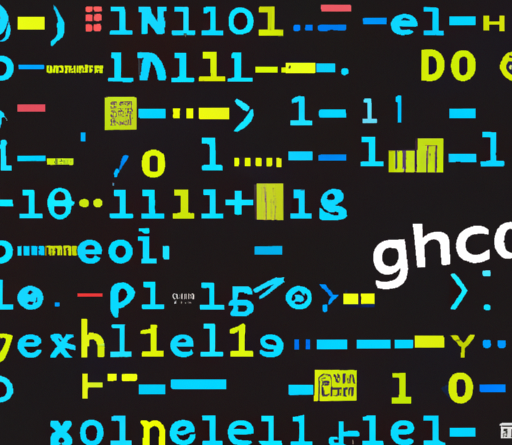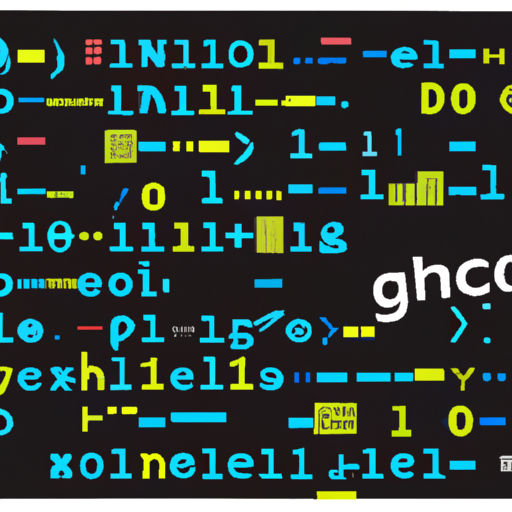
Hey there! Are you interested in learning how to teach coding to kids? Well, you’ve come to the right place! In this article, we’ll show you some awesome tips and tricks on how to make coding fun and accessible for children. Whether you’re a parent, teacher, or simply someone who wants to share the joy of coding with the younger generation, we’ve got you covered. Get ready to dive into the world of teaching coding for kids!
If you’ve ever wondered how to introduce coding to kids in a way that is engaging and enjoyable, this article is for you. We’ll explore different methods and resources that can help you break down complex concepts into bite-sized, kid-friendly lessons. From fun coding games and activities to interactive online platforms, there are so many tools out there that can make learning to code a breeze for children. So, buckle up and get ready to discover how to ignite your students’ passion for coding and set them on a path towards becoming future tech-savvy innovators. Stay tuned for some exciting ideas that will make coding education an absolute blast!
Table of Contents
How to Teach Coding for Kids
The Importance of Teaching Coding for Kids
In today’s digital age, coding skills are becoming increasingly important for children to develop. As technology continues to advance, coding serves as the foundation for many aspects of our lives. Teaching coding to kids at an early age not only equips them with practical skills for the future but also fosters creativity, problem-solving abilities, and logical thinking. It is essential to understand why coding is important for kids before delving into how to teach it effectively.
Why is coding important for kids?
Coding is a valuable skill for children to learn due to several reasons. Firstly, coding develops computational thinking skills, which are crucial for problem-solving and logical thinking. It teaches kids to break complex tasks into smaller, more manageable steps, enabling them to analyze problems and come up with innovative solutions. Additionally, coding enhances creativity by allowing kids to express their ideas and design unique projects, fostering their imagination and originality. Moreover, coding is a highly sought-after skill in the job market, making it a valuable asset for future career prospects. By introducing coding to kids early on, we prepare them for success in the digital world.
Benefits of teaching coding to kids
Teaching coding to kids offers numerous benefits that extend beyond just learning how to code. It provides opportunities for interdisciplinary learning, allowing kids to integrate coding into other subjects like math, science, and even creative arts. Coding also enhances critical thinking skills, as it requires kids to analyze problems, find patterns, and come up with logical solutions. Furthermore, coding nurtures perseverance and resilience in kids, as they often encounter challenges and obstacles that require patience and determination to overcome. The ability to adapt to new technologies and understand how they work is another valuable skill that coding imparts to kids. Overall, teaching coding equips kids with essential skills for the future and sets them up for long-term success.
How coding can foster creativity and problem-solving skills
Coding provides an excellent avenue for kids to showcase their creativity and develop problem-solving skills. Through coding, kids can explore their imaginative abilities by creating projects, games, and interactive stories. They can design their own characters, scenarios, and storylines, allowing their creativity to flourish. Moreover, coding encourages experimentation and risk-taking, as kids can modify and improve their code until they achieve the desired outcome. This process teaches them to think logically, analyze errors, and find solutions, enhancing their problem-solving skills. Coding also promotes collaboration and teamwork, as kids often work together to create complex projects or solve coding challenges. By fostering creativity and problem-solving skills, coding empowers kids to become innovative thinkers and prepares them for future challenges.
Choosing the Right Coding Language for Kids
When it comes to teaching coding to kids, selecting the appropriate coding language is crucial. Different coding languages have varying levels of complexity, so it is essential to choose a language that is suitable for kids’ age and skill level. Factors such as ease of use, visual interfaces, and availability of learning resources should be considered while selecting a coding language for kids.
Factors to consider when selecting a coding language for kids
Before choosing a coding language for kids, it is essential to consider their age, cognitive abilities, and prior coding experience. Younger kids may benefit from coding languages that focus on visual programming, as they often struggle with textual coding syntax. Additionally, it is crucial to select a language that provides a user-friendly interface and intuitive tools, making it easier for kids to understand and navigate. Availability of learning resources, such as tutorials, interactive platforms, and games, is another crucial factor to consider. It is important to choose a coding language that offers ample support and learning materials to facilitate kids’ progress and understanding.
Popular coding languages suitable for kids
Several coding languages are suitable for teaching kids coding, each with its own advantages and suitability for different age groups. Scratch is a widely popular language for kids, as it utilizes a drag-and-drop interface and visual programming blocks. It is beginner-friendly and allows kids to create interactive stories, animations, and games. Blockly, another visual programming language, is suitable for younger kids and provides a simple interface for learning coding concepts. Python, a textual-based language, is suitable for older kids with some coding experience and offers more advanced functionalities. Its simple syntax allows kids to write more complex code and develop a deeper understanding of coding concepts.
Comparison of coding languages for kids
| Coding Language | Age Range | Features |
|---|---|---|
| Scratch | 7-12 | Drag-and-drop interface, visual programming blocks |
| Blockly | 5-10 | Visual programming language, beginner-friendly |
| Python | 11-18 | Text-based coding language, advanced functionalities |
Choosing the right coding language for kids depends on their age, experience, and learning preferences. It is crucial to consider these factors to ensure a positive coding learning experience for kids.

Creating a Structured Curriculum for Teaching Coding to Kids
Simply introducing coding concepts to kids is not enough; a structured curriculum is necessary to effectively teach coding. A well-designed curriculum helps set learning objectives, develops age-appropriate coding projects, integrates coding into other subjects, and tracks kids’ progress.
Setting learning objectives and goals
When creating a curriculum for teaching coding to kids, it is important to set clear learning objectives and goals. These objectives should outline what kids are expected to learn and achieve through the coding program. For instance, the curriculum may aim to develop problem-solving skills, encourage creativity, or introduce specific coding concepts. Setting these objectives helps provide a sense of direction and purpose to the coding lessons.
Designing age-appropriate coding projects
To keep kids engaged and motivated, it is important to design coding projects that are suitable for their age and skill level. Younger kids may enjoy creating interactive stories or simple games, while older kids can tackle more complex projects like building websites or developing mobile applications. The curriculum should provide a variety of coding projects that progressively increase in difficulty, challenging kids while ensuring they feel accomplished.
Integrating coding into other subjects
Integrating coding into other subjects helps kids understand the practical applications of coding and enhances their interdisciplinary learning. For example, math concepts can be reinforced through coding activities that involve calculations or geometric shapes. Science concepts can be explored through coding simulations or experiments. By integrating coding into other subjects, kids can see how coding relates to their daily lives and develop a deeper understanding of different academic areas.
Progress tracking and assessment
Regular assessment and progress tracking are essential aspects of teaching coding to kids. This allows educators to evaluate kids’ understanding and growth in coding skills, identify areas for improvement, and provide targeted feedback. Progress tracking can be done through coding exercises, quizzes, or projects, and can be recorded in a portfolio or online platform. By monitoring kids’ progress, educators can adjust teaching strategies accordingly and ensure kids are advancing in their coding journey.
Making Coding Fun and Engaging for Kids
Teaching coding to kids should be a fun and engaging experience to keep them motivated and enthusiastic. By incorporating gamification, interactive platforms, storytelling, and collaboration, coding lessons can become enjoyable and memorable for kids.
Gamification of coding lessons
Turning coding lessons into games or challenges can make the learning experience more entertaining and enjoyable for kids. For example, creating coding competitions, puzzles, or scavenger hunts can engage kids in a friendly and competitive environment. By introducing points, badges, or rewards for completing coding tasks, kids are motivated to progress and achieve more.
Using interactive coding platforms and tools
Interactive coding platforms and tools can enhance kids’ coding experience by providing a visual and hands-on learning environment. Platforms like Scratch and Blockly offer interactive interfaces where kids can drag and drop code blocks to create projects, making coding more intuitive and engaging. Additionally, coding robots and toys provide a tangible way for kids to learn and experiment with coding concepts in a playful manner.
Incorporating storytelling and characters into coding activities
Storytelling and characters can significantly enhance kids’ interest in coding. By creating coding activities that involve storytelling elements or characters, kids become more invested in the coding process. For example, they can code a character to navigate through a virtual world or create animations that tell a story. This approach stimulates kids’ imagination and creativity, making coding more exciting and relatable.
Encouraging collaboration and teamwork
Collaboration and teamwork are important aspects of teaching coding to kids. Group coding activities or projects promote communication, problem-solving, and sharing of ideas among kids. By working together, kids can learn from each other, brainstorm solutions, and gain a sense of accomplishment through shared success. This also mirrors real-world coding scenarios where teamwork and collaboration are highly valued.

Teaching Coding Concepts and Logic to Kids
Teaching coding concepts and logic to kids requires breaking down complex ideas into simple and understandable terms. By introducing algorithms, logical thinking, and problem-solving techniques, kids can grasp coding concepts more effectively.
Breaking down coding concepts for easy understanding
Complex coding concepts can be overwhelming for kids, so it is important to break them down into smaller, more digestible parts. Using relatable examples, metaphors, or visual representations can make abstract concepts more tangible and understandable for kids. Additionally, providing hands-on coding exercises and real-world examples help reinforce these concepts and make them more applicable.
Introducing algorithms and logical thinking
Algorithms form the basis of coding, and teaching kids to understand and create algorithms enhances their logical thinking skills. By teaching kids how to sequence and organize steps, they learn to think step-by-step and break down problems into smaller parts. Logical thinking enables kids to analyze and find solutions using an algorithmic approach, which is a valuable skill both in coding and everyday life.
Teaching debugging and problem-solving techniques
Debugging is an essential skill in coding, as it involves identifying and fixing errors in code. Teaching kids debugging techniques helps them develop problem-solving skills and critical thinking. Guiding kids on how to recognize common errors, analyze code for mistakes, and debug systematically empowers them to independently troubleshoot issues. Problem-solving and debugging skills are integral to coding and provide a foundation for kids to become self-sufficient coders.
Providing Support and Guidance to Kids during the Learning Process
Support and guidance are vital to kids’ coding education as they navigate through the learning process. Creating a supportive learning environment, offering hands-on assistance, and encouraging experimentation establish a strong foundation for kids to learn and grow.
Creating a supportive and inclusive learning environment
A supportive learning environment is crucial for kids to feel comfortable, confident, and motivated to learn coding. Encouraging questions, providing positive feedback, and fostering a non-judgmental atmosphere allows kids to freely express their ideas and explore coding concepts at their own pace. Additionally, promoting inclusivity and diversity in coding education ensures that all kids feel welcome and represented in the coding community.
Offering hands-on assistance and guidance
Kids often require hands-on assistance and guidance while learning coding. Educators and parents should be available to answer questions, provide explanations, and help kids troubleshoot coding problems. Offering one-on-one guidance and support allows kids to receive personalized attention and ensures they develop a solid understanding of coding concepts. Utilizing coding tutorials and online resources can also provide additional support for kids during independent coding practice.
Encouraging experimentation and learning from mistakes
Coding is a field that encourages experimentation and learning from mistakes. Kids should be encouraged to try different coding approaches, explore alternative solutions, and embrace failure as a learning opportunity. Encouraging a growth mindset and reminding kids that mistakes are part of the learning process fosters resilience and perseverance. By teaching kids to embrace challenges and learn from their mistakes, they develop a growth mentality that extends beyond coding.
Resources and Tools for Teaching Coding to Kids
A variety of resources and tools are available to support teaching coding to kids. Online platforms, coding toys and games, books, and coding clubs provide valuable learning opportunities and engagement for kids.
Online platforms and websites for kid-friendly coding tutorials
Numerous online platforms and websites offer kid-friendly coding tutorials, interactive lessons, and coding challenges. Platforms like Code.org, Khan Academy, and Scratch provide comprehensive coding curricula for different ages and skill levels. These platforms often incorporate visual programming, game-like interfaces, and engaging projects to make learning coding enjoyable and accessible for kids.
Coding toys and games for hands-on learning
Coding toys and games provide a hands-on and tactile approach to learning coding concepts. Products like Lego Mindstorms, Sphero, and Cubetto allow kids to program robots or control physical objects using coding logic. These toys make coding more tangible and interactive, fostering kids’ understanding and engagement with coding principles.
Books and educational materials for teaching coding
Books and educational materials are valuable resources for teaching coding to kids. They provide structured lessons, real-world examples, and coding exercises that reinforce coding concepts. Popular books like “Hello Ruby” by Linda Liukas and “Coding Games in Scratch” by Jon Woodcock offer engaging narratives and coding activities that teach kids coding skills through storytelling and game-like scenarios.
Community resources and coding clubs for kids
Community resources, such as coding clubs and workshops, provide opportunities for kids to engage with other young coders and share their experiences. These resources often offer mentorship programs, coding challenges, and networking opportunities that supplement classroom learning. Additionally, coding clubs provide a supportive environment for kids to collaborate, learn from others, and gain real-world coding experiences.
Encouraging Continued Development and Practice
Once kids have gained basic coding skills, it is important to encourage them to continue practicing and developing their abilities. Inspiring kids to pursue coding beyond basic skills, providing opportunities for coding projects and challenges, and supporting participation in coding competitions and events motivate kids to further excel in coding.
Inspiring kids to pursue coding beyond basic skills
To inspire kids to continue coding, it is crucial to showcase the diverse applications and possibilities of coding. Educators can introduce real-life examples, success stories of young coders, and career prospects in coding. By demonstrating the endless possibilities and impact of coding, kids become motivated to explore advanced coding concepts and potential paths in their coding journey.
Providing opportunities for coding projects and challenges
Providing kids with opportunities to work on coding projects and challenges keeps them engaged and motivated to further develop their skills. Assigning real-world coding projects, encouraging kids to participate in coding competitions, or organizing coding exhibits or showcases gives kids a platform to apply their skills and gain recognition. By nurturing their coding abilities through practical applications, kids become more confident and driven to excel in coding.
Supporting participation in coding competitions and events
Participating in coding competitions and events fosters healthy competition, encourages collaboration with peers, and exposes kids to new coding concepts and techniques. Educators can encourage kids to join coding competitions, coding camps, or coding workshops to broaden their coding horizons and showcase their skills. These events provide valuable learning opportunities, networking possibilities, and the chance to receive feedback from coding professionals.
Involving Parents and Guardians in the Coding Journey
Involving parents and guardians in the coding education of kids is essential for their continued growth and support. Educating parents about the importance of coding, guiding them on supporting their kids’ coding education, and organizing parent-child coding activities and workshops create a collaborative and supportive coding environment for kids.
Educating parents about the importance of coding
Many parents may not be familiar with coding or its significance in their children’s education. Educating parents about the importance of coding equips them with knowledge and understanding. Hosting educational seminars, sending newsletters or informational materials, and providing resources for parents to learn coding basics can help parents realize the value of coding and support their kids’ coding education effectively.
Guiding parents on supporting their kids’ coding education
Parents play an integral role in supporting their kids’ coding education at home. Guiding parents on how to create a coding-friendly environment, assisting kids in their coding projects, and encouraging regular coding practice establishes a foundation for success. Offering resources, such as coding books, online tutorials, and coding toys, to parents can help them actively engage with their children’s coding journey.
Organizing parent-child coding activities and workshops
Organizing parent-child coding activities and workshops promote a collaborative and interactive learning environment. These activities allow parents to actively participate in their children’s coding education, fostering a sense of teamwork and bonding. By organizing coding workshops or hackathons for parents and kids, families can learn coding concepts together and support each other’s coding progress.
Conclusion
Teaching coding to kids is of utmost importance in today’s digital age. It equips children with vital skills for the future, fosters creativity and problem-solving abilities, and instills a deep understanding of technology. By choosing the right coding language, creating a structured curriculum, making coding fun and engaging, teaching coding concepts and logic, providing support and guidance, and utilizing relevant resources, educators and parents can effectively teach coding to kids. Encouraging continued development, involving parents and guardians, and fostering a supportive coding community solidify the foundations for kids’ coding journey. By investing in coding education, we empower our children to thrive in the digital era and become the innovators of tomorrow.







